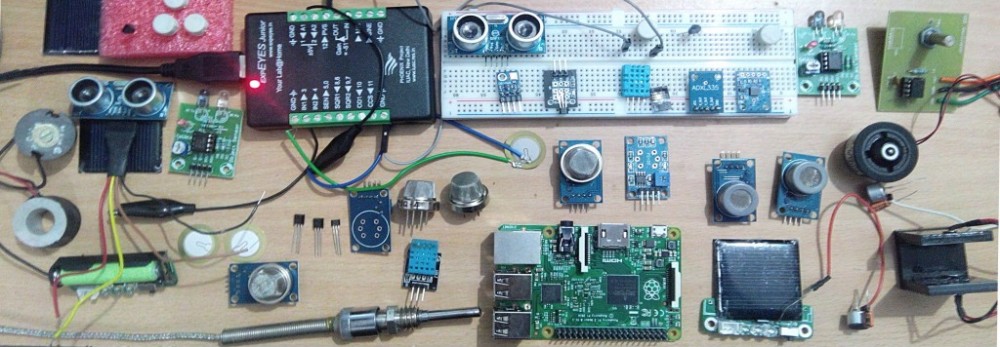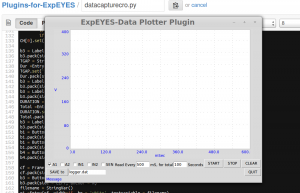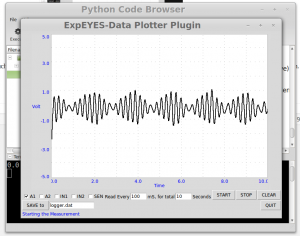Experiment to investigate the damping effect of air, water and other viscous liquids on spring oscillations can be very interesting if done with a computer interface. Currently these set-ups are available for very high cost and come with proprietary and closed source software. They general use Rotary motion sensors which are costly.
Since yesterday I was working on this idea of setting up an experiment with low cost apparatus using ExpEYES. Tried using a simple DC motor to fetch the data and plot oscillations. ( we were using this method for digitizing pendulum waveform). After multiple trials now the setup is ready and got amazing results.
The schematic diagram and my home made set up is here…… 🙂
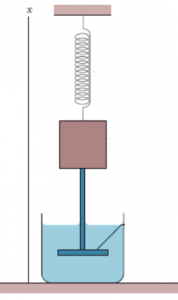
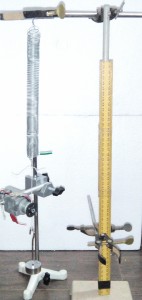
On release after being pulled down, a spring oscillates with decreasing amplitude due
to viscosity of liquid, and finally becomes stationary. Here DC motor is our low cost rotary motion sensor… 🙂
Here is the screen-shot of the waveform generated in water. Tomorrow I will try this experiment with other liquids like glycerin.
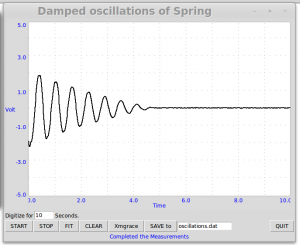
Some errors occurred while fitting the curve need to find out the problem.
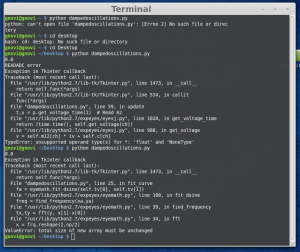
Information from Hyperphysics was of great help

The code is here….. (Used program for pendulum waveform with little modifications)
